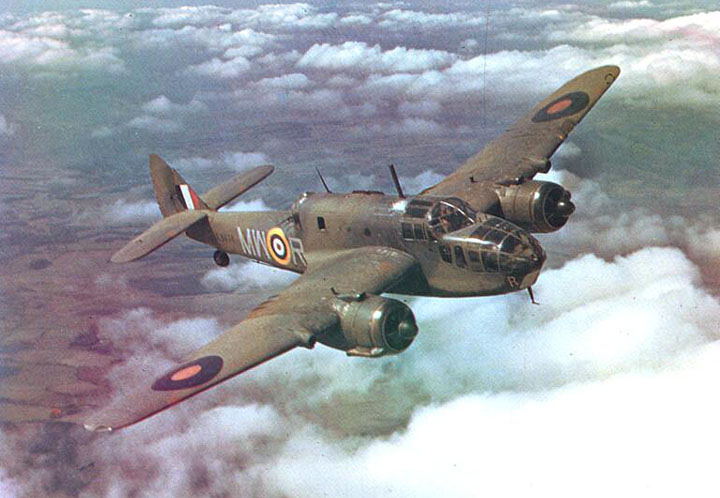BRITISH AVIATION RESOURCE CENTER > BOMBERS > PREVIOUS PAGE
BRISTOL BEAUFORT

Developed from the Blenheim light bomber, the Beaufort proved to be heavier than it's parent
design. This extra weight, in part because of the additional crewman, proved to be too much
for the original Bristol Mercury engines. After reviewing several designs, the Bristol Taurus
was chosen though there were initial installation problems. These instalation problems, among
them a tendancy to overheat, delayed development somewhat. However, two squadrons were
operational by August 1940, the 22 and 42 Squadrons of Coastal Command. The Beaufort served the
Coastal Command well, laying hundreds of mines and were involved in
the attacks on the Scharnhorst and the Gneisenau as well as numerous attacks on smaller
shipping.
Plans for producing the type in Australia were begun in 1939. The
logistical problems of supplying engines from England led to the Pratt & Whitney Twin Wasp
being adapted to the design. One hundred sixty five of British built Beaufort Mk. IIs
were equipped with this engine as well but then reverted to the Taurus from 166 on.
Australian versions can be identified by a larger tail fin and several
different derivatives were developed including trainer and transport versions.
– Specifications
– Gallery
Sources:
Gunston, Bill - The Encyclodepia of the Worlds Combat aircraft, 1976, Chartwell Books, Inc., New York
BRITISH AVIATION RESOURCE CENTER > BOMBERS > PREVIOUS PAGE

